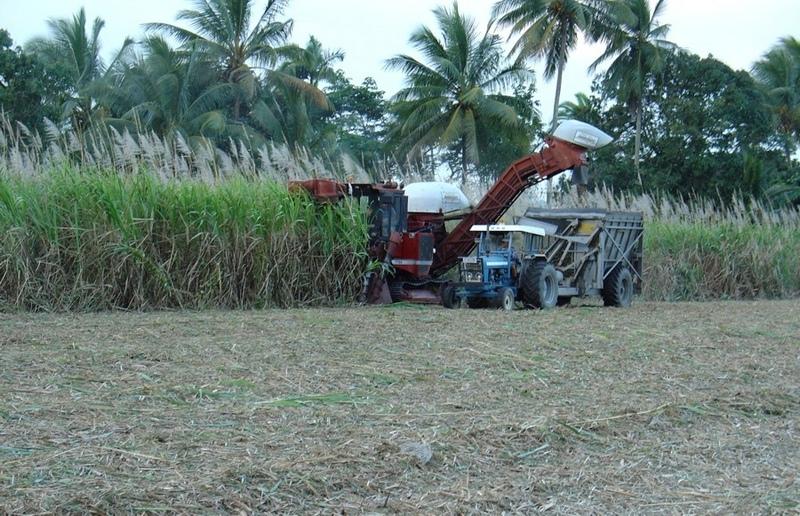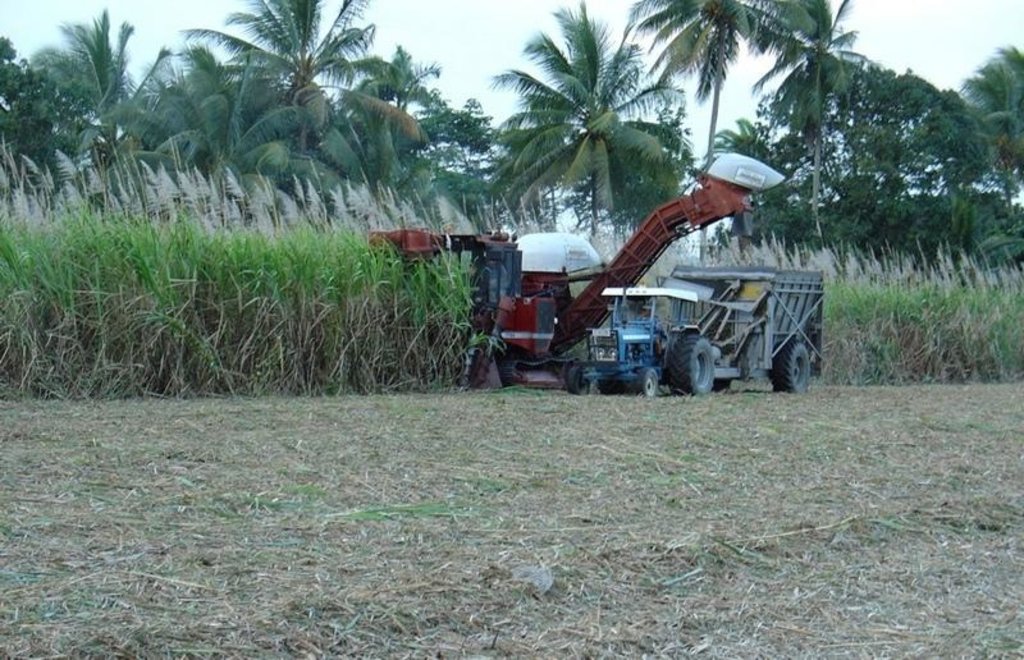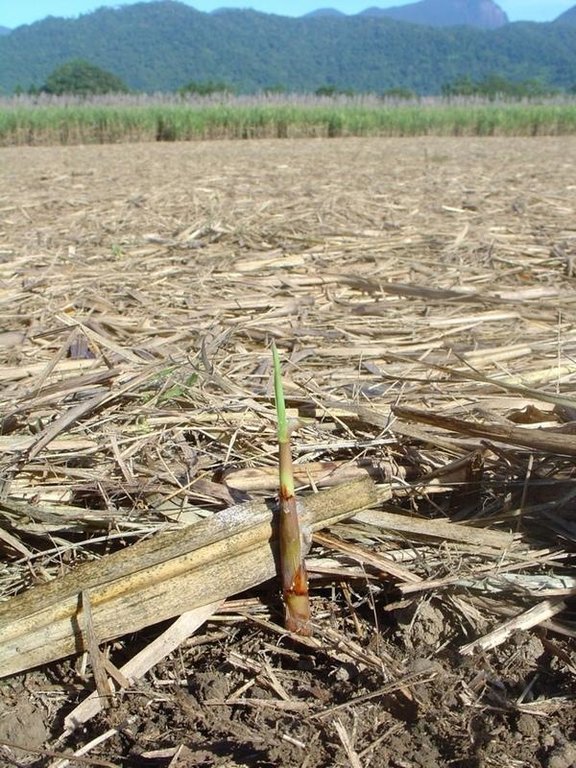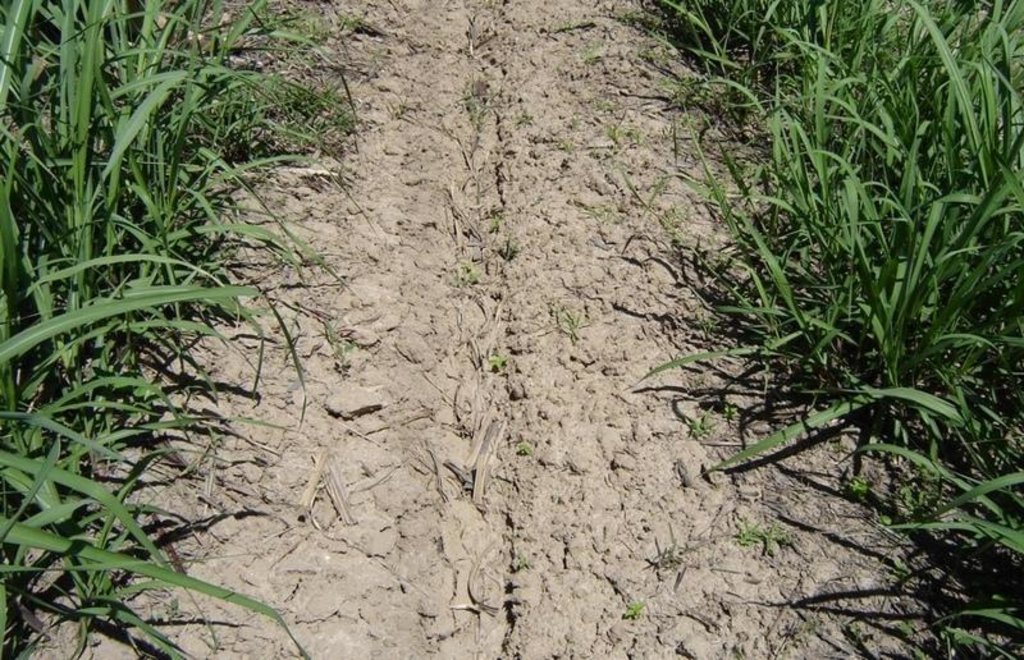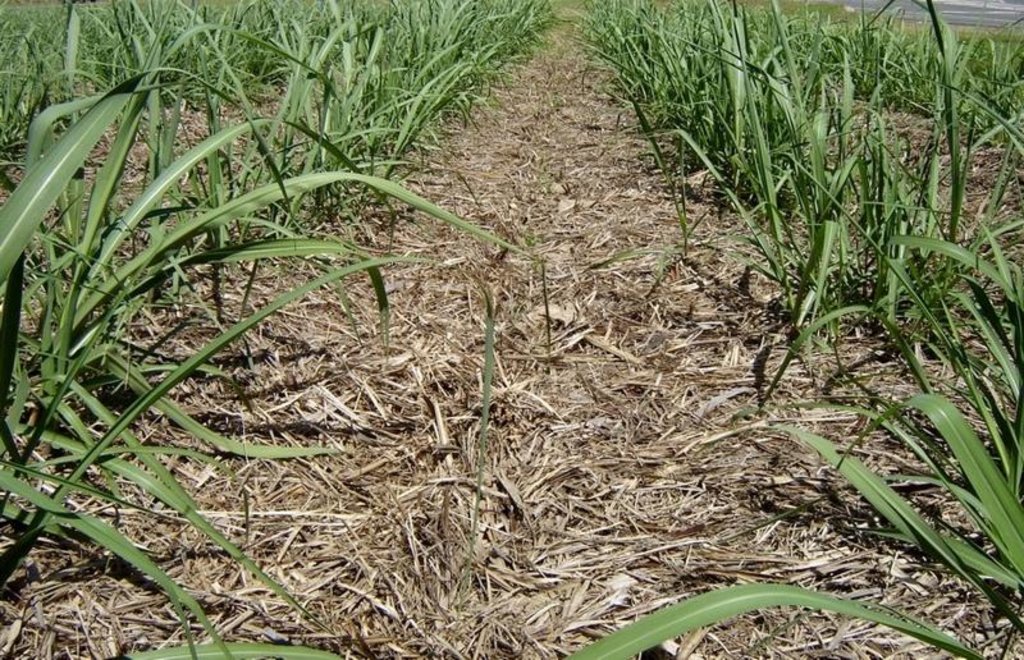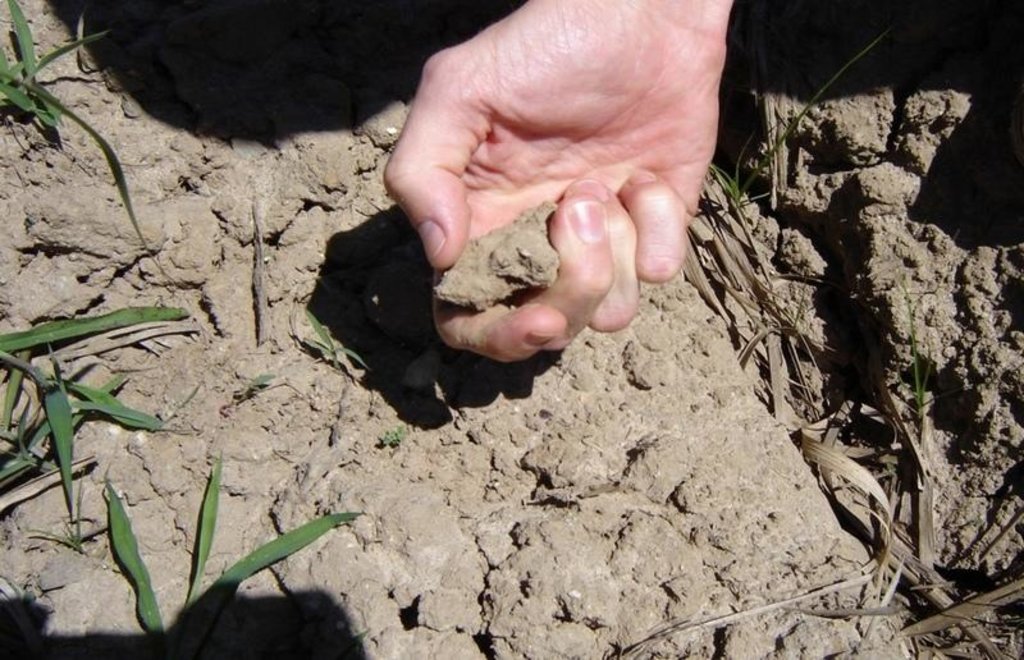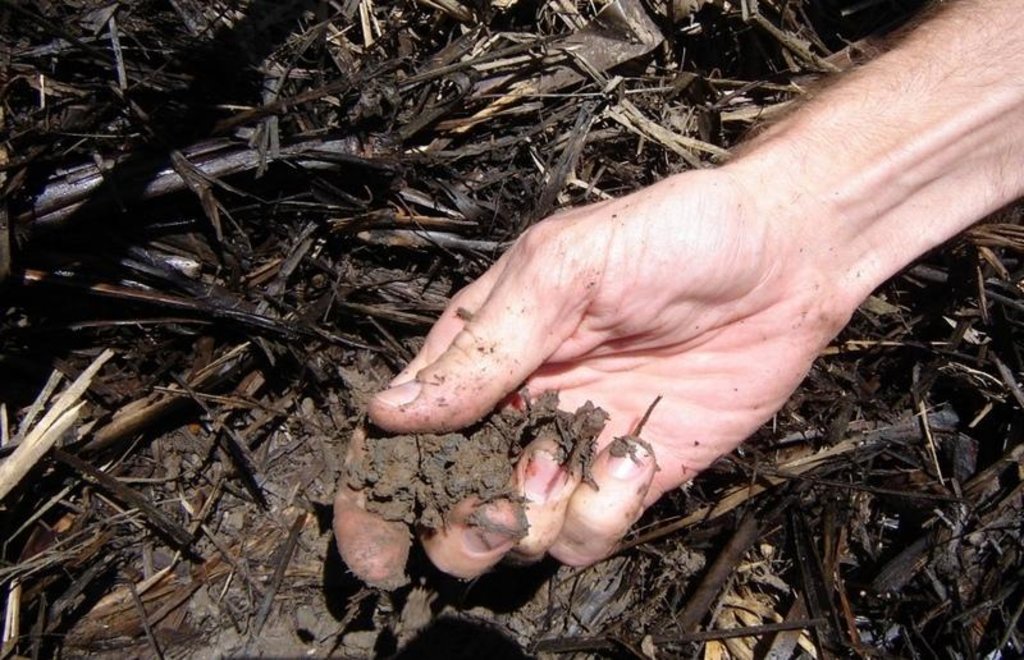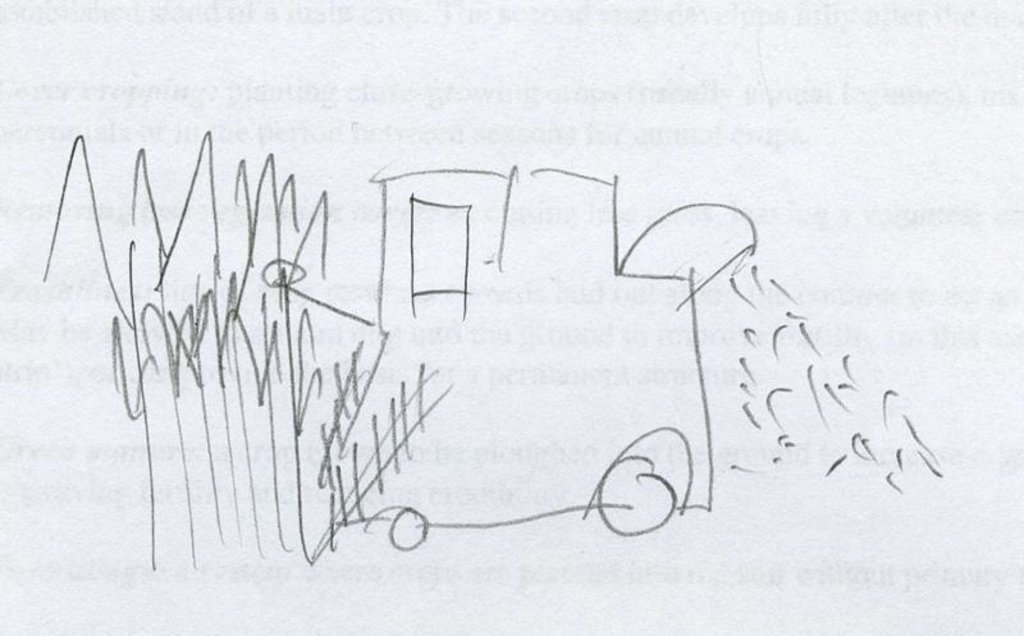Green cane trash blanket [Australia]
- Creación:
- Actualización:
- Compilador: Anthony J. Webster
- Editor: –
- Revisores: Alexandra Gavilano, Fabian Ottiger
Trash blanket
technologies_951 - Australia
Visualizar secciones
Expandir todo Colapsar todos1. Información general
1.2 Detalles de contacto de las personas de referencia e instituciones involucradas en la evaluación y la documentación de la Tecnología
Nombre del proyecto que financió la documentación/ evaluación de la Tecnología (si fuera relevante)
Book project: where the land is greener - Case Studies and Analysis of Soil and Water Conservation Initiatives Worldwide (where the land is greener)Nombre de la(s) institución(es) que facilitaron la documentación/ evaluación de la Tecnología (si fuera relevante)
CSIRO (CSIRO) - Australia1.3 Condiciones referidas al uso de datos documentados mediante WOCAT
¿Cuándo se compilaron los datos (en el campo)?
01/09/2005
El compilador y la/s persona(s) de referencia claves aceptan las condiciones acerca del uso de los datos documentados mediante WOCAT:
Sí
1.5 Referencia al (los) Cuestionario(s) de Enfoques MST
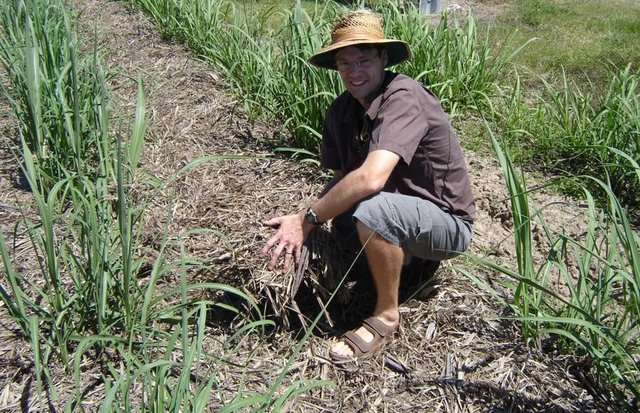
The 'Triple bottom line' [Australia]
A new expression used by agriculturalists in Australia to explain why farmers change practices: the 'triple bottom line' implies economic, environmental and social concerns.
- Compilador: Anthony J. Webster
2. Descripción de la Tecnología MST
2.1 Breve descripción de la Tecnología
Definición de la Tecnología:
Elimination of burning as a pre-harvest treatment of sugar cane, and managing the resultant trash as a protective blanket to give multiple on and off-site benefits.
2.2 Descripción detallada de la Tecnología
Descripción:
Under conventional production systems, sugar cane is burnt before being harvested. This reduces the volume of trash - comprising green leaves, dead leaves and top growth - making harvesting of the cane simpler, and subsequent cultivation of the soil easier. In the humid tropics of North Queensland, harvesting of cane used to be carried out by hand - as it still is in many parts of the developing tropics. Burning was necessary to make harvesting possible in a dense stand (and to reduce the danger of snakes). However, with the advent of mechanical harvesters in the 1960s, burning continued to be practiced through habit.
A new system then brought fundamental changes in soil management: The ‘green cane trash blanket’ (GCTB) technology refers to the practice of harvesting non-burnt cane, and trash blown out behind in rows by the sugar cane harvester. This trash forms a more or less complete blanket over the field. The harvested lines of cane re-grow (‘ratoon’) through this surface cover, and the next year the cycle is repeated: the cane is once again harvested and more trash accumulates in the inter-rows. Generally the basic cropping cycle is the same, whether cane is burnt or not. This involves planting of new cane stock (cuttings or ‘billets’) in the first year, harvesting this ‘plant crop’ in the second year, and then in years three, four, five and six taking successive ‘ratoon’ harvests. In year six, after harvest, it is still common, even under the GCTB system, to burn the residual trash so that the old cane stools can be more easily ploughed out, and the ground ‘worked up’ (cultivated) ready for replanting. A minority of planters, however, are doing away with burning altogether, and ploughing in the residual trash before replanting. A further variation is not to plough out and replant after the harvest in year six, but to spray the old cane stock with glysophate (a broad spectrum non-selective systemic herbicide) to kill it, then to plant a legume (typically soy bean) as a green manure crop, and only replant the subsequent year after ploughing-in the legume. Under this latter system, one year of harvest is lost, but there are added benefits to the structure and nutrient content of the soil.
Whatever variation of GCTB is used, there are advantages in terms of increased organic matter, improved soil structure, more biodiversity (especially below ground) and a marked reduction in surface erosion - from over 50 t/ha to around 5 t/ha on average. Less erosion is good for the growers - but is also of crucial importance off-site, as sediment lost from the coastal sugar cane strip is washed out to sea, and damages the growing coral of the Great Barrier Reef.
2.3 Fotografías de la Tecnología
2.5 País/ región/ lugares donde la Tecnología fue aplicada y que se hallan comprendidos por esta evaluación
País:
Australia
Región/ Estado/ Provincia:
North Queensland, Australia
Especifique más el lugar :
Ingham
Map
×3. Clasificación de la Tecnología MST
3.1 Propósito(s) principal(es) de la Tecnología MST
- reducir, prevenir, restaurar la degradación de la tierra
- preservar/ mejorar biodiversidad
3.2 Tipo(s) actuales de uso de la tierra donde se aplica la Tecnología

Tierras cultivadas
- Cultivos perennes (no leñosos)
Cosechas principales (comerciales y de subsistencia):
Major cash crop: Sugar cane
Comentarios:
Major land use problems (compiler’s opinion): Conventional burning of sugar cane before harvest can lead to compaction of top soil and reduced organic matter. There is also, despite the low slopes, a serious problem of sheet/rill erosion that has a negative impact both on the fields, and also off-site on the coral reef.
Major land use problems (land users’ perception): soil erosion, weeds, flooding
3.3 Información adicional sobre el uso de tierras
Provisión de agua para la tierra donde se aplica la Tecnología:
- de secano
Número de temporadas de cultivo por año:
- 1
Especifique:
Longest growing period in days: 300 Longest growing period from month to month: Aug - May
3.4 Grupo MST al que pertenece la Tecnología
- cobertura de suelo/ vegetal mejorada
3.5 Difusión de la Tecnología
Comentarios:
Total area covered by the SLM Technology is 800 m2.
Wet tropics region of far north Queensland
3.6 Medidas MST que componen la Tecnología
3.7 Principales tipos de degradación de la tierra encarados con la Tecnología

erosión de suelos por agua
- Wt: pérdida de capa arable/ erosión de la superficie
- Wo: efectos de degradación fuera del sitio

deterioro químico del suelo
- Cn: reducción de la fertilidad y contenido reducido de la materia orgánica del suelo (no ocasionados por la erosión)
Comentarios:
Main type of degradation addressed: Wt: loss of topsoil / surface erosion, Wo: offsite degradation effects, Cn: fertility decline and reduced organic matter content
3.8 Prevención, reducción o restauración de la degradación de la tierra
Especifique la meta de la Tecnología con relación a la degradación de la tierra:
- reducir la degradación de la tierra
4. Especificaciones técnicas, actividades de implementación, insumos y costos
4.1 Dibujo técnico de la Tecnología
4.2 Especificaciones técnicas/ explicaciones del dibujo técnico
Harvester harvesting cane and depositing trash on surface
Location: Queensland
Technical knowledge required for field staff / advisors: low
Technical knowledge required for land users: low
Main technical functions: control of raindrop splash, improvement of ground cover, improvement of soil structure, control of dispersed runoff
Secondary technical functions: increase in organic matter, increase of infiltration, increase in soil fertility, increase in surface roughness
Mulching
Remarks: "trash blanketing"
4.3 Información general sobre el cálculo de insumos y costos
Indique el costo promedio del salario de trabajo contratado por día:
100.00
4.6 Actividades de establecimiento/ recurrentes
| Actividad | Tipo de medida | Momento/ frequencia | |
|---|---|---|---|
| 1. | Mulching of inter-rows with trash[previously: burn cane with associated trash and then harvest] | Agronómicas | August |
| 2. | Fertilize cane | Agronómicas | October |
| 3. | Spray with Amicide (very efficient herbicide, systemic and non-selective) | Agronómicas | November |
| 4. | Spray with Amicide | Agronómicas | January |
4.7 Costos e insumos necesarios para actividades de mantenimiento/ recurrentes (por año)
| Especifique insumo | Unidad | Cantidad | Costos por unidad | Costos totales por insumo | % de los costos cubiertos por los usuarios de las tierras | |
|---|---|---|---|---|---|---|
| Mano de obra | Contract harvesting | ha | 1,0 | 390,0 | 390,0 | 100,0 |
| Fertilizantes y biocidas | Fertilizer | ha | 1,0 | 120,0 | 120,0 | 100,0 |
| Fertilizantes y biocidas | Herbicides | ha | 1,0 | 33,0 | 33,0 | 100,0 |
| Indique los costos totales para mantenecer la Tecnología | 543,0 | |||||
Comentarios:
Machinery/ tools: sugar-cane harvester
The year budgeted above is a non-planting year, the costs therefore refer to an established crop which grows
throughout the year and is harvested in August. The assumption is a cane yield of 80 t/ha. Each of the three categories of costing groups machinery, labour (at US$12 per hour) and inputs together. The comparative costs for a burnt cane crop system with the same yield are (a) contract harvesting = US$ 378 (b) fertilizer = US$ 120 (c) herbicide = US$ 56, plus (d) cultivation = US$ 30. Note that under the burnt cane system, soil cultivation/tillage is required, but the cost of harvesting is a little cheaper. The total for the burnt crop system is US$ 584 compared with US$ 543 for the GCTB crop, representing a saving of approx. US$ 40 (around 7%) per hectare per year.
5. Entorno natural y humano
5.1 Clima
Lluvia anual
- < 250 mm
- 251-500 mm
- 501-750 mm
- 751-1,000 mm
- 1,001-1,500 mm
- 1,501-2,000 mm
- 2,001-3,000 mm
- 3,001-4,000 mm
- > 4,000 mm
Zona agroclimática
- húmeda
Thermal climate class: tropics
5.2 Topografía
Pendientes en promedio:
- plana (0-2 %)
- ligera (3-5%)
- moderada (6-10%)
- ondulada (11-15%)
- accidentada (16-30%)
- empinada (31-60%)
- muy empinada (>60%)
Formaciones telúricas:
- meseta/ planicies
- cordilleras
- laderas montañosas
- laderas de cerro
- pies de monte
- fondo del valle
Zona altitudinal:
- 0-100 m s.n.m.
- 101-500 m s.n.m.
- 501-1,000 m s.n.m
- 1,001-1,500 m s.n.m
- 1,501-2,000 m s.n.m
- 2,001-2,500 m s.n.m
- 2,501-3,000 m s.n.m
- 3,001-4,000 m s.n.m
- > 4,000 m s.n.m
Comentarios y especificaciones adicionales sobre topografía :
Landforms: Plateau/plains (floodplain adjacent to ocean)
Slopes on average: Also gentle (ranked 2), moderate (ranked 3)
5.3 Suelos
Profundidad promedio del suelo:
- muy superficial (0-20 cm)
- superficial (21-50 cm)
- moderadamente profunda (51-80 cm)
- profunda (81-120 cm)
- muy profunda (>120 cm)
Textura del suelo (capa arable):
- mediana (limosa)
- fina/ pesada (arcilla)
Materia orgánica de capa arable:
- baja (<1%)
Si se halla disponible, adjunte una descripción completa de los suelos o especifique la información disponible, por ej., tipo de suelo, pH/ acidez de suelo, capacidad de intercambio catiónico, nitrógeno, salinidad, etc. :
Soil fertility: Medium and high (both ranked 1)
Soil drainage/infiltration: Good
5.6 Las características de los usuarios de la tierra que aplican la Tecnología
Orientación del mercado del sistema de producción:
- comercial/ mercado
Ingresos no agrarios:
- 10-50% de todo el ingreso
Nivel relativo de riqueza:
- promedio
Indique otras características relevantes de los usuarios de las tierras:
Off-farm income specification: various off-farm enterprises undertaken to supplement income during years of poor sugar prices
5.7 Área promedio de la tierra que pertenece a o es arrendada por usuarios de tierra que aplican la Tecnología
- < 0.5 ha
- 0.5-1 ha
- 1-2 ha
- 2-5 ha
- 5-15 ha
- 15-50 ha
- 50-100 ha
- 100-500 ha
- 500-1,000 ha
- 1,000-10,000 ha
- > 10,000 ha
Comentarios:
Average area of land owned or leased by land users applying the Technology: Also 15-50 ha and 100-500 ha (both ranked 2)
5.8 Tenencia de tierra, uso de tierra y derechos de uso de agua
Tenencia de tierra:
- individual, con título
Derechos de uso de tierra:
- individual
6. Impactos y comentarios para concluir
6.1 Impactos in situ demostrados por la Tecnología
Impactos socioeconómicos
Ingreso y costos
ingreso agrario
Impactos socioculturales
MST/ conocimiento de la degradación de la tierra
Acceptance by society
Comentarios/ especifique:
Enhanced reputation of sugar cane growers as 'environmentally friendly'
Impactos ecológicos
Ciclo de agua/ escurrimiento de sedimento
escurrimiento superficial
drenaje de agua en exceso
Suelo
humedad del suelo
cubierta del suelo
pérdida de suelo
Comentarios/ especifique:
From >50 t/ha to 5 t/ha; although the location is relatively flat, soil erosion can be high due to high rainfall
ciclo/ recarga de nutrientes
Comentarios/ especifique:
Loss of nutrients reduced, inproved soil structure
materia orgánica debajo del suelo C
Biodiversidad: vegetación, animales
biomasa/ sobre suelo C
diversidad animal
Otros impactos ecológicos
Soil fertility
Carbon sequestration
6.2 Impactos fuera del sitio demostrados por la Tecnología
inundaciones río abajo
colmatación río abajo
contaminación de aguas subterráneas/ de ríos
sedimentos transportados por el viento
6.4 Análisis costo-beneficio
¿Cómo se comparan los beneficios con los costos de mantenimiento/ recurrentes (desde la perspectiva de los usuarios de tierra)?
Ingresos a corto plazo:
ligeramente positivo
Ingresos a largo plazo:
positivo
6.5 Adopción de la Tecnología
De todos quienes adoptaron la Tecnología, ¿cuántos lo hicieron espontáneamente, es decir, sin recibir incentivos/ pagos materiales?
- 90-100%
Comentarios:
95% of land user families have adopted the Technology without any external material support
1000 land user families have adopted the Technology without any external material support
There is a little trend towards spontaneous adoption of the Technology
Comments on adoption trend: It is possible that the few growers who persist in burning will eventually adopt the GCTB system through social and environmental pressure.
6.7 Fuerzas/ ventajas/ oportunidades de la Tecnología
| Fuerzas/ ventajas/ oportunidades desde la perspectiva del compilador o de otra persona de referencia clave |
|---|
|
GCTB systems offer multiple on-farm environmental benefits How can they be sustained / enhanced? Continue to refine the system, by encouraging (a) non burning of trash in the |
|
Increases overall farm income by maintaining yields of sugar cane while How can they be sustained / enhanced? Continue to refine the system. |
|
GCTB systems provide protection to the coral reef, through substantially reducing the sediment yield that reaches the lagoon and thence the Great Barrier Reef How can they be sustained / enhanced? Give recognition to the growers for their overall environmental contribution. |
6.8 Debilidades/ desventajas/ riesgos de la Tecnología y formas de sobreponerse a ellos
| Debilidades/ desventajas/ riesgos desde la perspectiva del compilador o de otra persona de referencia clave | ¿Cómo sobreponerse a ellas? |
|---|---|
| Some burning still continues through (a) the few farmers who have not yet adopted GCTB and (b) the common practice of burning trash before replanting | Continue to encourage non-burning for multiple reasons. |
7. Referencias y vínculos
7.2 Vínculos a las publicaciones disponibles
Título, autor, año, ISBN:
Mullins JA, Truong PN and Prove BG (1984) Options for controlling soil loss in canelands – some interim values. Proc. Aust. Soc. Sugar Cane Technol., 6: 95–100
Título, autor, año, ISBN:
Vallis I, Parton WJ, Keating BA and Wood AW (1996) Simulation of the effects of trash and N fertilizer management on soil organic matter levels and yields of sugarcane. Soil and Tillage Research. 38: 115–132
Título, autor, año, ISBN:
Wood AW (1991) Management of crop residues
following green harvesting of sugarcane in north Queensland. Soil Till. Res. 20: 69–85
Vínculos y módulos
Expandir todo Colapsar todosVínculos

The 'Triple bottom line' [Australia]
A new expression used by agriculturalists in Australia to explain why farmers change practices: the 'triple bottom line' implies economic, environmental and social concerns.
- Compilador: Anthony J. Webster
Módulos
No se hallaron módulos


